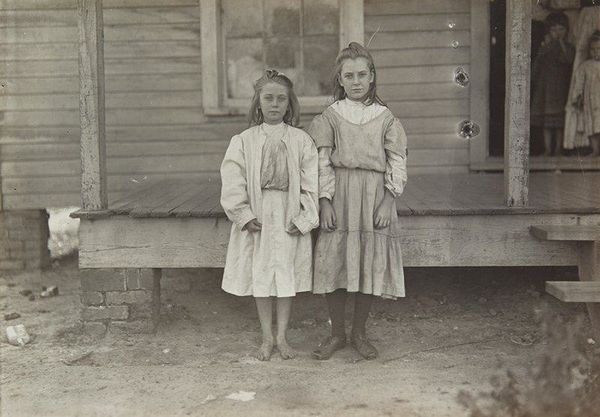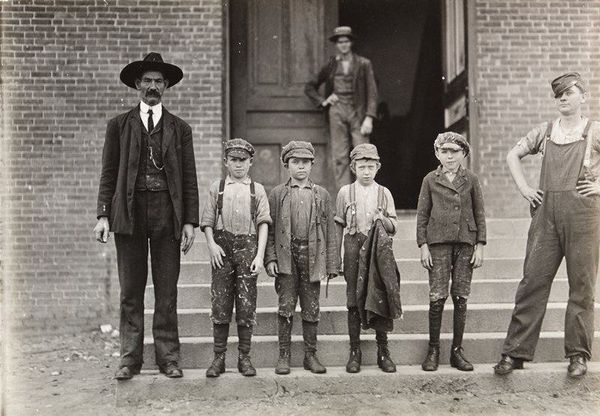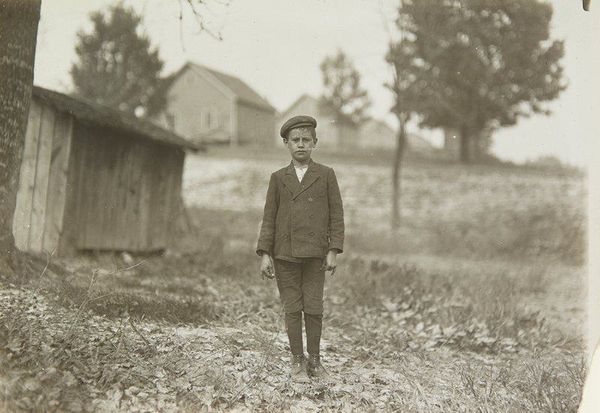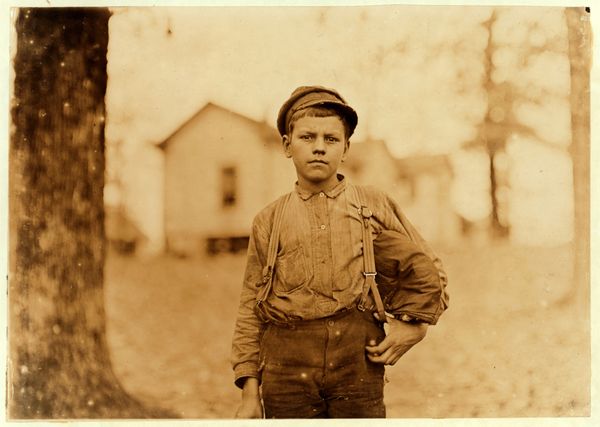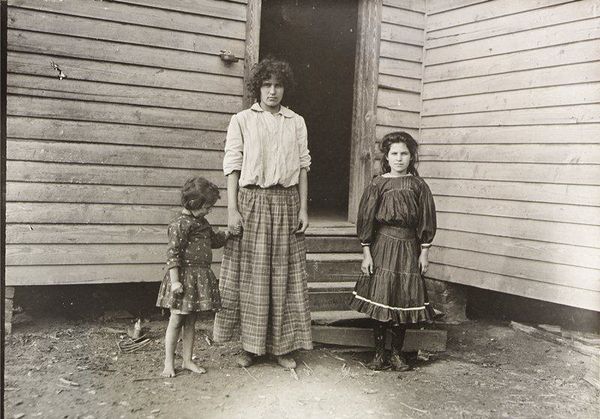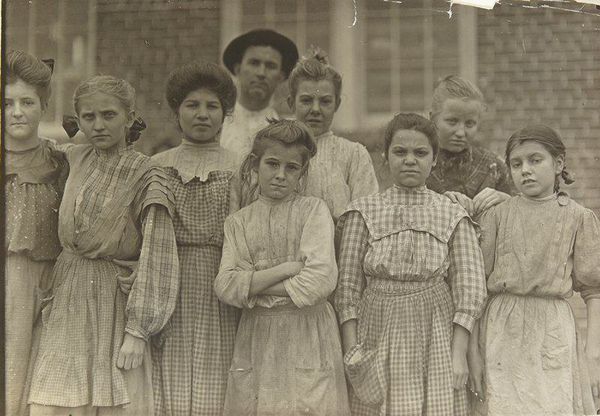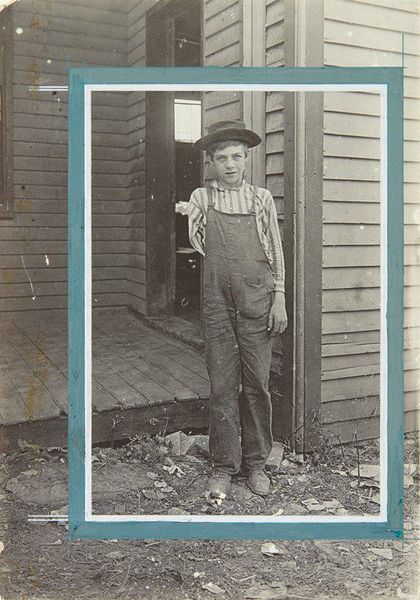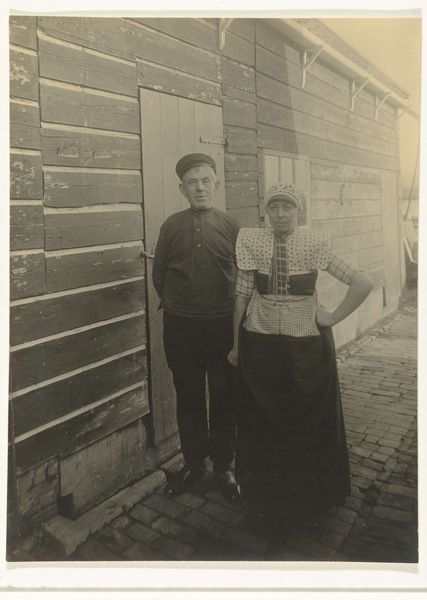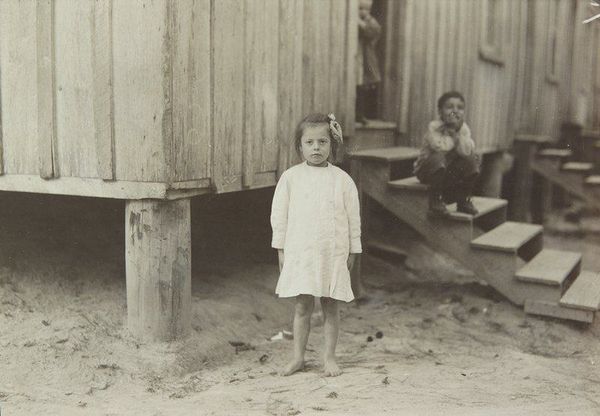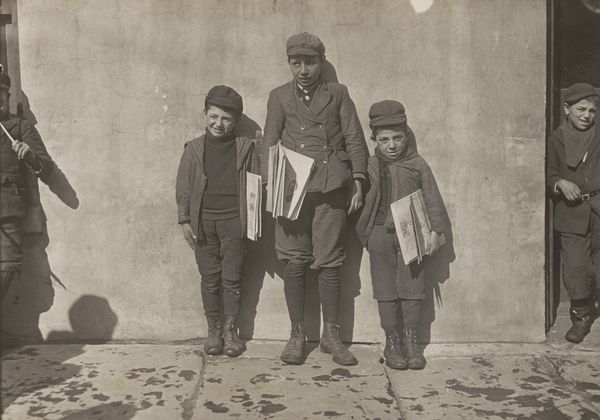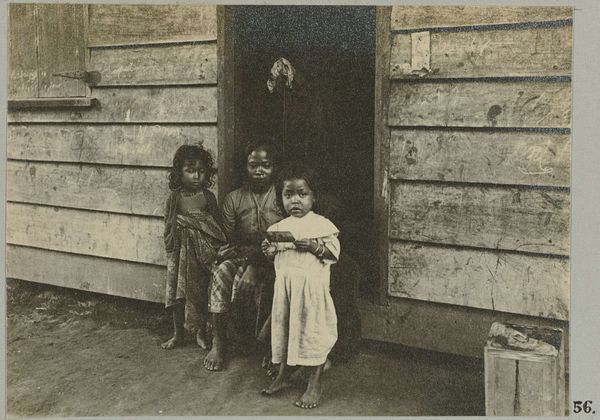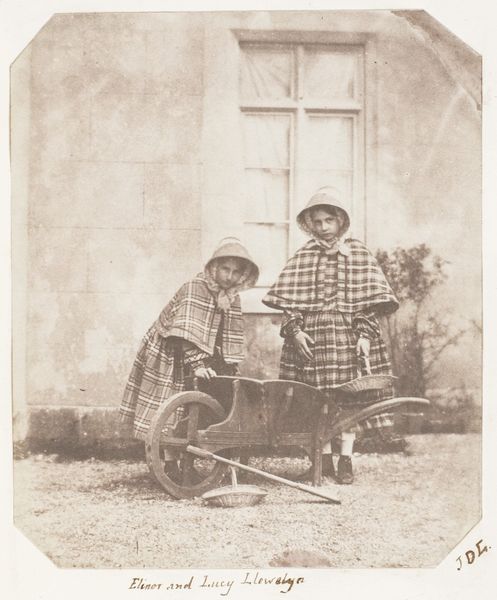
Dimensions: 4 7/16 x 6 7/16 in. (11.27 x 16.35 cm) (image)5 x 6 15/16 in. (12.7 x 17.62 cm) (sheet)
Copyright: No Copyright - United States
Lewis Hine made this photograph sometime in the early 20th century using a camera, lens and photographic paper. It's all shades of gray and off-white, a study in light. It's an image of two young boys standing on a street, each holding books or papers. The surface is mostly smooth, like a memory, but look closer and you'll see the texture of the brick wall, the rough pavement, and the soft clothing. There’s a beautiful tension between the sharp focus on the boys' faces and the soft blur of the background. It's the kind of photo that makes you wonder about their lives. And what about those bare feet? They anchor the composition, drawing our attention to the present, to the feeling of standing on that street corner. Hine was an activist, and I wonder if Walker Evans might have looked at Hine's images. Anyway, it makes me think about how a single photograph can hold so much, both seen and unseen.
Comments
minneapolisinstituteofart almost 2 years ago
⋮
Lewis Hine was a documentary photographer, educator, and social reformer. Trained in sociology, Hine taught at the progressive Ethical Culture School in New York City before turning his attention to photography. As a photographer for the National Child Labor Committee (NCLC), Hine traveled the United States to document children in unsafe working conditions in factories, mines, fields, and city streets. Over ten years, he created an indelible record of the human cost of an exploitative labor market, documenting the tired faces of children at the end of their shifts, or even children mutilated by industrial machinery. These disturbing photographs were used in publications and presentations created by Hine and the NCLC, and ultimately promoted sweeping policy changes designed to protect children.
Join the conversation
Join millions of artists and users on Artera today and experience the ultimate creative platform.

